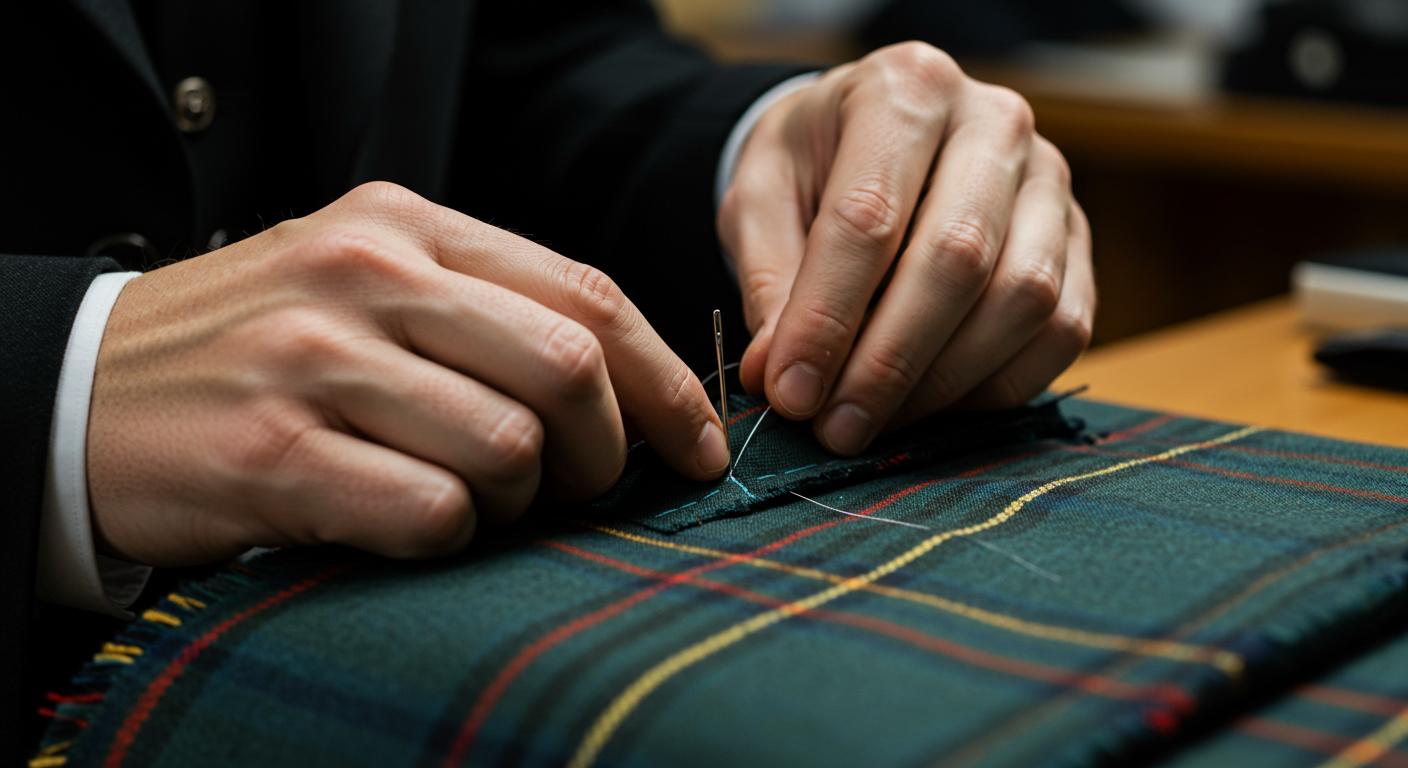The Craftsmanship Behind Formal Kilts: A Deep Dive into Traditional Tailoring Techniques

The kilt is more than just an article of clothing—it symbolizes Scottish identity, culture, and pride. For centuries, kilts have been worn to mark formal and informal occasions, evolving from everyday attire for Highland clans to a garment synonymous with significant events. The craftsmanship behind formal kilts involves a careful combination of traditional techniques and modern tailoring innovations, ensuring that each piece embodies authenticity and elegance. This article explores the intricate craftsmanship that transforms simple materials into a beautifully tailored formal kilt.
1. The Historical Roots of Scottish Tailoring Techniques
The kilt story begins in the 16th century when Highland Scots donned the "feileadh mór," or Great Kilt, a long and versatile garment. Initially designed for practicality and warmth, it was shortened into the more recognizable knee-length kilt. Early kilt-making relied on handwoven wool and basic stitching methods, but even then, attention to detail was paramount. The tailoring techniques evolved as the garment became a formal symbol of Highland heritage.
Today, formal kilts draw heavily on this historical foundation. Modern kilt-makers adhere to many traditional principles, particularly tartan alignment and pleat structure. The meticulous preservation of these age-old methods ensures that formal kilts for men and women retain their cultural authenticity.
2. Selecting High-Quality Fabrics: The Essence of Longevity
A kilt's durability and appearance rely heavily on the materials used. Premium tartan fabrics, typically woven from wool, are the gold standard for formal kilts. Wool offers flexibility and durability, making it ideal for creating decades-long garments.
Tailors pay close attention to the weight of the fabric, typically choosing heavy tartan for formal kilts. Heavier fabrics create a more structured and polished appearance and help the pleats hold their shape during movement. The texture of the fabric is equally essential; fine wool ensures the kilt drapes elegantly while remaining comfortable. By prioritizing the right materials, kilt-makers craft garments that balance beauty and functionality.
3. Precision in Pattern Cutting: A Critical Step in Tartan Alignment
One of the most defining features of a kilt is its tartan pattern. Each clan or region has its unique tartan, often passed down through generations. Ensuring that the pattern aligns correctly is a critical part of kilt-making.
Cutting the fabric requires extreme precision, as misalignment can detract from the kilt's overall appearance. Skilled tailors meticulously plan how the pattern will fall across the garment. Particular attention is paid to the pleats, where the tartan must line up perfectly to create a seamless and aesthetically pleasing design. Without this careful approach, the kilt risks losing its visual impact and symbolic significance.
4. Mastering Pleat Perfection: The Art of Structure and Flow
The pleating process is central to the kilt's construction, creating its distinctive shape and allowing it to move gracefully. Several pleating techniques, including knife and box pleats, each offering a different look and feel.
Knife pleats, commonly used in formal kilts, involve folding the fabric in one direction, creating a sleek and streamlined effect. Tailors measure each pleat precisely to maintain uniformity and ensure the kilt drapes evenly. The depth of the pleats is also carefully calculated, as it affects the kilt's structure and comfort.
On the other hand, box pleats create a more voluminous and traditional look, often favored for ceremonial kilts. Regardless of the technique, the key to success lies in consistency, with each pleat meticulously pinned, stitched, and pressed to maintain its form.
5. Crafting Formal Kilts: The Intersection of Tradition and Detail
Creating a formal kilt involves several stages beyond pleating and fabric cutting. The waistband, lining, and fastenings must be carefully crafted to ensure the garment fits perfectly and withstand regular wear.
The waistband is constructed to provide support and maintain the kilt's structure. It is typically reinforced with sturdy materials to prevent sagging over time. The lining is added to enhance comfort and protect the inner fabric from wear and tear. Fastenings, such as leather straps and metal buckles, secure the kilt in place while adding a touch of elegance.
Skilled tailors often rely on traditional hand-stitching methods for certain parts of the kilt, mainly where precision is critical. While modern machines are used for efficiency, hand-sewn details ensure that every seam is secure and flawlessly finished.
6. Customization and Personal Touches: Crafting Unique Pieces
One of the hallmarks of a high-quality kilt is its level of customization. Formal kilts can be tailored to reflect the wearer's heritage, personal style, or specific events. Tailors often offer options for custom tartans, allowing clients to create unique designs or incorporate family patterns.
Embellishments such as embroidered clan crests, decorative stitching, or hand-applied tassels can elevate the kilt's appearance. Customization ensures that no two kilts are exactly alike, making each piece a wearable work of art.
7. Finishing Touches: Ensuring a Polished and Elegant Look
The final stages of kilt-making involve thorough inspection and finishing. Tailors check every seam, pleat, and fastening to ensure no flaws. The kilt is pressed and steamed, creating sharp pleats and a smooth drape.
Ironing and steaming are essential to achieving the clean, polished appearance expected of a formal kilt. Proper finishing techniques enhance the garment's visual appeal and help preserve its shape over time.
8. Apprenticeships and Artisans: The Future of Traditional Kilt-Making
Traditional kilt-making is an art passed down through generations. Many master kilt-makers take on apprentices, ensuring their knowledge and skills are preserved. These apprentices learn not only the technical aspects of kilt-making but also the cultural significance of the craft.
However, the modern world presents challenges, including the rise of mass production and changing fashion trends. To safeguard the future of this art form, artisans and cultural organizations work together to promote traditional craftsmanship. Supporting local kilt-makers helps preserve the authenticity and legacy of this iconic garment.
Conclusion:
The craftsmanship behind formal kilts is a testament to the dedication and skill of traditional tailors. Each process step is carried out with precision and care, from selecting high-quality fabrics to perfecting pleats and adding personalized touches. By investing in a hand-tailored kilt, wearers embrace a piece of Scottish heritage and support the continuation of a centuries-old craft. With its blend of history, culture, and artistry, the formal kilt remains a timeless symbol of pride and tradition.


